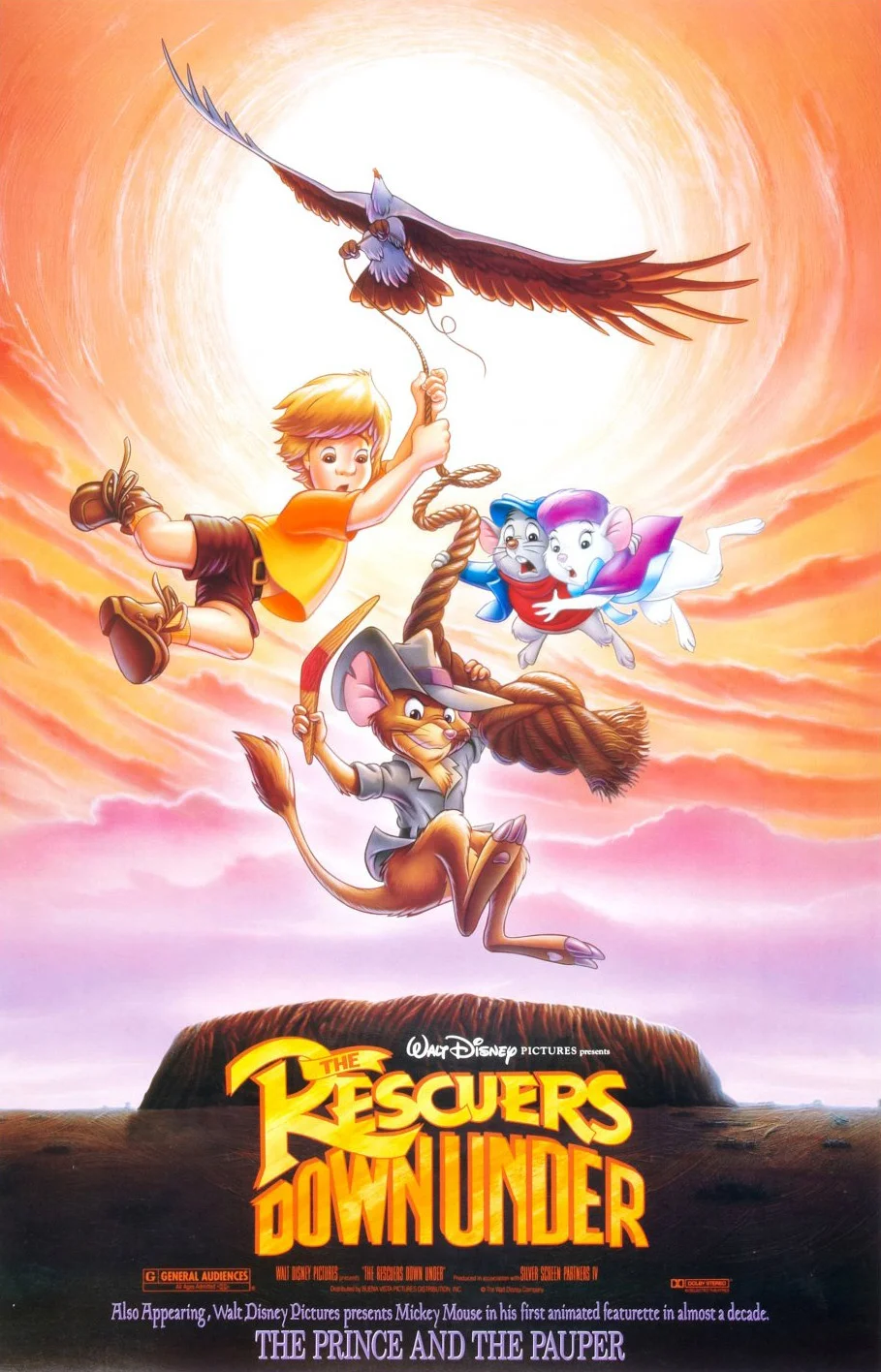The Rescuers Down Under (1990)
Written by Jim Cox, et al.
Directed by Hendel Butoy & Mike Gabriel
The most notable thing about Rescuers Down Under (other than it might be the first film I ever saw in a movie theater), is that it, technically, is the first all digital film. With this film, Disney began using the CAPS animation system, which allowed them to draw, paint, and animate all within the computer. The biggest bonus about this, for me, is the return to the cleaner line that we saw before the XEROX process.
NOPE. HARD PASS.
Rescuers Down Under, Disney’s first true theatrical sequel, was the lowest box office performer of the Renaissance era. It’s probably no coincidence that it is the film most unlike the others of this period, but I think that’s more because Disney found a winning formula and kept it, and less on the merits of the film. The film really does have some stellar qualities about it. From the get-go, the new system allows for a much grander sense of scale, so the choice of the outback setting is really fitting, to show off what the system can do (as a side note, about the epic opening sequence: if I were that little boy, I’d die right then and there. Nothing about the first 5 minutes seems at ALL fun from my perspective).
Even Marahuté is confused by this plot logic
I think the bigger issue with the film is not that it’s different from the Broadway Formula of the rest of the Renaissance, it’s just with the story itself. There are parts of the story that are illogical, starting with the whole reason Cody gets taken by McLeach: Cody has one of Marahuté’s feathers, so McLeach assumes Cody knows where the nest is. First, perhaps Cody just found the feather. You ever just come upon a feather on the ground? I have. Doesn’t mean I went to the birds nest and hung out for a while. Secondly, let’s assume this bird is magical and it’s feathers never come off, so having the feather means Cody actually had an interaction with Marahuté. Why should this mean this interaction took place at the nest? She obviously leaves the nest from time to time (hence, how she got stuck in the trap in the first place), so why would McLeach just assume that a trip to the nest must have occurred? That’s a lot of assumptions just for some eggs for your lizard, McLeach.
YES I KNOW IT’S JUST A CARTOON. I’M JUST SAYING.
Bianca still isn’t given anything to do in the film (I lost count of how many variations of “Bernard, do something” I heard), and as much as I love John Candy, his (multiple) subplots just kept slowing everything down. The film also just kind of...ends, without much of a wrap up. Like, it’s jarring how sudden it is.
It’s a fun film, if one doesn’t over-analyze it (so, obviously, I am so not the target audience for it). Taken as it is, it’s a fun adventure story, with a good message about animal rights hidden within it.
FINAL GRADE: B




